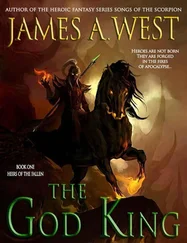No, now would not be a good time to cut off Horemheb’s arm. Later, perhaps. After the victory was assured.
“It will not happen again,” Tut barked, steel in his voice.
His schooling had included courses in tactics and warfare. Now, with Horemheb’s taunt ringing in his ears, Tut took command of the battlefield. He removed the composite bow from his shoulders. Made of cherrywood and leather, its gleaming ivory decorations looked too beautiful for the battlefield, even as the copper-headed arrows in his quiver shone with lethal intent.
“Give the order for battle formations!” he told Horemheb.
The general glared at Tut but said nothing at first. He was not used to being ordered about, especially by a boy. “As you wish, my king,” he finally replied.
Then Horemheb turned and faced the assembled army. “Battle formations!”
The Egyptian column spread out, until they formed a wide but narrow line, shoulder to shoulder, twenty men deep, facing down the men of Canaan.
The well-trained charioteers remained in front. The archers scurried to the right and left flanks.
Horemheb and the entire army awaited Tut’s next command.
Conventional wisdom said that a wide-open battlefield like this desert plain favored the defender, so in this case it was best to wait for the Canaanites to make the first move.
But Tut knew that such tactics did not always work. As his adrenaline surged, flooding him with a new fearlessness, his instincts told him that this day the Egyptians must attack first.
“I do not wish to give them a chance to flee behind the city walls,” Tut stated evenly.
“As I said before, we will wait them out,” insisted the general.
Tut licked his lips. Holding tight to the reins of his chariot, he stepped from the chassis and turned to face his troops.
Their bodies glistened with sweat, and they looked tired from the two-week march from Thebes, but there was no mistaking their professionalism. They were reliant warriors, hungry for battle and the rewards of victory. They had trained and drilled for the sweet primal satisfaction of fighting man to man against a sworn enemy of Egypt. And then-plunder.
Tut’s heart raced. He had never been so proud to be an Egyptian.
The troops watched him expectantly, awaiting the next command. “General Horemheb, command the archers to open fire.”
Egyptian Desert
1324 BC
NOW EVEN HOREMHEB had caught the fever, and when his words rang out across the desert, they were delivered with the same excitement as Tut’s.
“Archers, take aim.”
The Canaanites could see the Egyptian archers draw arrows from their quivers and then pull back their bowstrings. A distant horn commanded the Canaanites to battle, and they flew at the Egyptians, daring their attackers to hold their lines.
Simultaneously, the Canaanite archers took aim.
Now Tut chose an arrow from his quiver, ready to fire the first shot of war. He launched it into the sky in a powerful arc, right on target. Only then did he call out to his men.
“Fire!” Tut commanded. His voice was thin and reedy, still that of a boy on the cusp of manhood. But there was fury in his tone, and a fearlessness that buoyed the Egyptian lines.
Tut’s archers sent forth a volley that blackened the sky before descending into the Canaanite infantry and charioteers. Hundreds of them fell, screaming to the heavens, writhing in agony.
Tut watched in dismay as the Egyptian infantry refused to attack, preferring to hold their lines.
It was Horemheb who told him why.
“They’re waiting for you, Pharaoh.”
Tut swallowed hard. How long had he been taking chariot lessons? Six years? Seven? He believed he could ride as well as any man, but he couldn’t be sure. “Be with me, Mother,” he whispered. Then the young pharaoh stepped back into his chariot.
“Sound the call, General.”
Horemheb signaled to the herald. The battle horn blared.
Meanwhile, the Canaanites continued to sprint forward, shouting and waving their long swords, hoping to terrify the Egyptians, and especially the young pharaoh.
Tut slipped his bow back over his shoulders. He pulled his sword from its scabbard. The time had come to christen it with the enemy’s blood. He slapped his reins down hard on his team’s flanks and raced straight toward the Canaanites.
As one, the Egyptian army roared forward behind him. High above them, another volley of arrows arced, then fell into the Canaanites’ battle lines.
Horemheb and the other Egyptian charioteers galloped up beside Tut. Within seconds they were trampling the bodies of Canaanite warriors, who writhed in pain. Tut could hear the whoosh of swords meant for him.
Holding the reins in one hand, Tut swung out with his sword. He was stunned to see the blade sever a man’s head. Tut had killed him, his first victim.
The Canaanites retreated, dropping their shields and sometimes even their swords, running for their lives.
But Tut could see that the great wooden city gates were shut tight. They could not escape.
The women of Canaan had chosen to doom their husbands and sons rather than submit to the Egyptians. It was left to Tut’s men to finish the slaughter. Canaanite bodies soon littered the desert, most butchered beyond recognition. Many of the dead were twisted into impossible positions. Some seemed to have died with an arm or leg reared up toward the sky.
Tut had finally tasted battle and become a man-and a true king.
Thebes
1912
THE BOOK THAT DOCUMENTED everything, every large and small success by Carter, was known as Five Years’ Exploration at Thebes: A Record of Work Done, 1907-1911. Despite the lack of a valley concession, the partnership between Carter and Carnarvon had certainly been prolific.
Carter had refined his excavation techniques, bringing greater precision and professionalism to the task. He used photography as a means of documenting discoveries and continued to sketch elaborate drawings. With local work crews sometimes numbering close to three hundred, he and Carnarvon discovered tombs of nobles and other high-ranking functionaries.
But as well received as Five Years’ Exploration proved to be, raising eyebrows in London and Cairo for the depth of the Carter/Carnarvon discoveries, the American Theodore Davis continued to overshadow them, and that galled Howard Carter.
Now a story about Davis making the rounds suggested that Davis had found not just a new tomb in the valley but the last tomb.
Theodore Davis believed he had found the elusive Tut.
Thebes
1912
IT ALL BEGAN when Davis and Edward Ayrton discovered a hidden doorway made of mud bricks and stamped with the image of a jackal watching over nine captives. This seal for the necropolis guard signified that a mummy was inside.
Next to that was stamped another symbol, this one representing Tutankhamen.
They immediately kicked down the door and tore away the bricks with their bare hands, then entered a narrow hall.
A sloping corridor led to the burial chamber. Rocks littered the floor. A piece of wood decorated with gold leaf showed the image of Queen Tiye, known to be the mother of the “heretic king” Akhenaten.
At the end of a hallway was the main chamber. It was heavily damaged by water, but the seals of Tutankhamen could be seen everywhere on the walls.
A casket lay on the floor.
Once it had rested atop a wooden platform, but time had rotted that away, and the coffin had toppled over. The lid had popped open, and when Davis looked inside, he was delighted to see a mummy staring back at him.
Portions of the bandaging were unwrapped. Davis could see hair and teeth and the remnants of a nose.
Читать дальше












